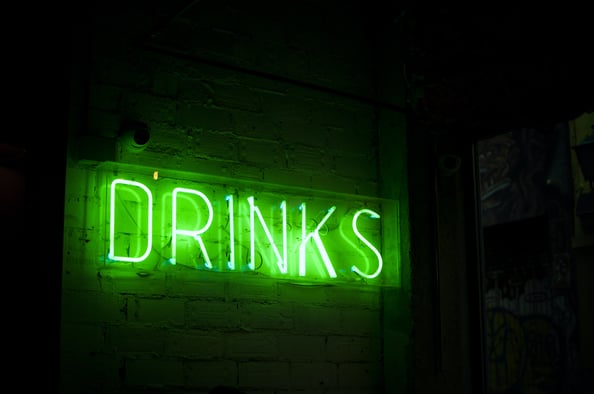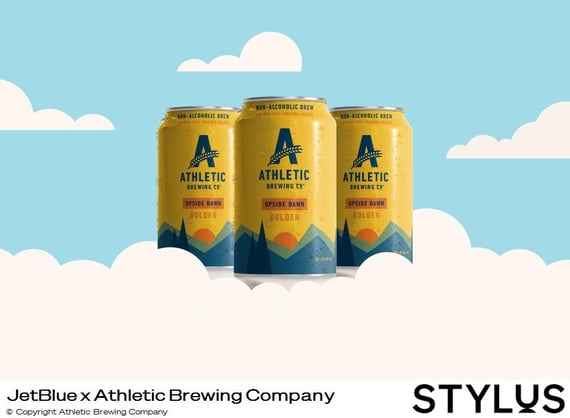Recent years have witnessed a surge in the sobriety movement, challenging the traditional association between socializing and alcohol consumption.

Booze-Free Gen Z
Taking a mindful approach to drinking – be it cutting back on alcohol or abstaining entirely – is a lifestyle shift that’s surging globally. Between 2022 and 2023, global Google searches for “sober curious” rose 96% (Vice, 2023), and 22% of Americans say they’re closely following a sober-curious lifestyle (Mintel, 2023). Gen Zers lead the sober-curious movement: while many imbibe regularly, 27% of 21- to 24-year-old Americans say they never drink (Civic Science, 2023). In APAC, only 3% of people in their 20s drink almost every day, compared to 10% of those in their 40's.
Intense drinking is losing its cultural appeal: British water brand Dash calculated the references to getting drunk in the top 10 songs in the official UK charts every year between 2012 and 2022 and found a 40% drop over that period.
Prioritizing Wellness in 2024
This shift reflects a broader societal move towards a more balanced and intentional lifestyle. The sobriety movement aligns seamlessly with the broader wellness industry, where individuals prioritize health-conscious choices. Consumers are seeking products that contribute positively to their well-being, and this extends to their beverage choices. Understanding this interconnectedness between sobriety and wellness is crucial for businesses looking to resonate with their target audience.
So why aren’t Americans drinking? Wellness is king. (Mintel, 2023)
-
39% of sober-curious Americans are incentivized by physical health
-
29% cite mental health reasons;
-
35% want to save money
Consumers are seeking products that contribute positively to their well-being, and this extends to their beverage choices. Understanding this interconnectedness between sobriety and wellness is crucial for businesses looking to resonate with their target audience.
Beverage Innovations for Teetotalers
From fizzy concoctions to smooth tipples, it’s becoming easier than ever for alcohol reducers to find a drink that excels in taste and mouthfeel. Established brands have thrown their hats into the ring with 0% beverages, while start-ups are disrupting with unusual and sophisticated offers. Brands like Seedlip, Athletic Brewing, and even new categories like THC soda Crescent 9, present teetotaling replacements during drinking occasions.

Non-Alcoholic Wine and Beer Market size is set to surpass USD 30 billion by 2025. Meanwhile, the beer industry—the world’s most popular alcoholic drink—is expected to shrink in the US. More demand is shifting into the non-alcoholic sector. This is not only creating opportunities for new product segments in the nonalcoholic beverage industry but is putting pressure on alcohol companies to innovate. Most notably, White Claw recently released a 0% version of their popular hard seltzer, and Brooklyn Brewery has released a full variety pack of their NA offerings: Special Effects.
Industries traditionally reliant on alcohol sales have had to adjust as well. No- or low-alcohol bars, nightclubs, and even dating apps have emerged to meet the sober curious. Sober social media influencers have gained followings: UK-based writer Millie Gooch founded the Sober Girl Society in 2018, an Instagram-based community of women who are ditching drink for a variety of reasons. She has over 200K+ followers and counting. There is a massive opportunity, and a necessity, to diversify product offerings and appeal to a broader consumer base by emphasizing NA offerings.

The Market: 2024 and Beyond
The rise of sobriety is not just a trend; it's a societal shift that is reshaping markets and consumer behaviors. Businesses that recognize the significance of this movement and invest in market research to understand the nuanced preferences of their audience will undoubtedly position themselves for success in this era of mindful living.
To thrive in the sobriety era, businesses should prioritize market research to gain insights into their consumers’ shifting needs and preferences. Understanding consumer sentiments, identifying market gaps, and innovating in response to evolving trends are critical components of a successful strategy. By embracing the insights gleaned from market research, businesses can navigate the changing landscape and emerge as leaders in the era of sobriety.
Contact MDRG to see how we can help you understand and market to the sober curious consumer.
Photos and statistics courtesy of our research partner, Stylus.
Are you eager to stay ahead of the curve in your industry? Sign up for our monthly insights email and gain exclusive access to valuable market research, industry trends, and actionable recommendations delivered directly to your inbox.
Topics from this blog: CPG Market Research Trends Beverage